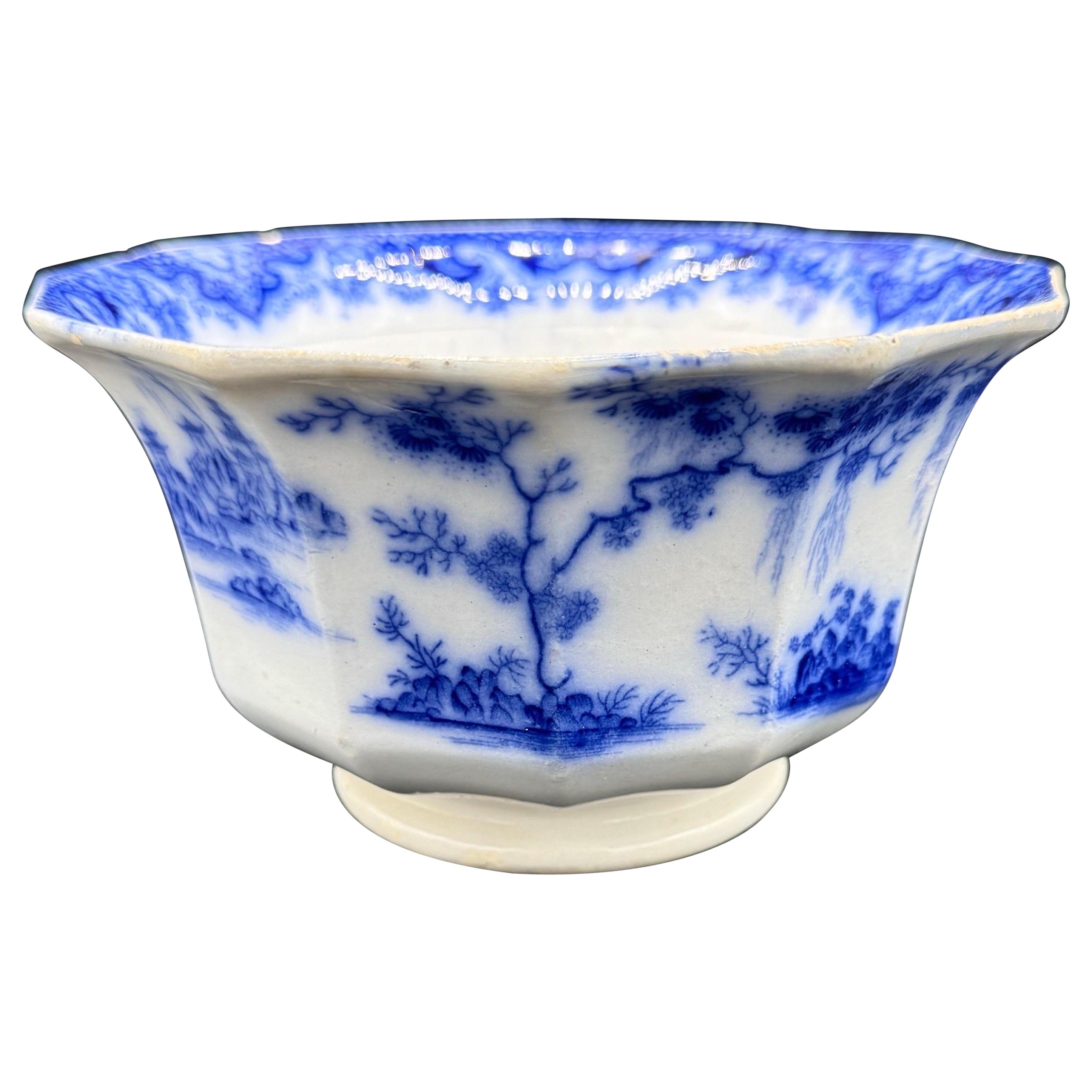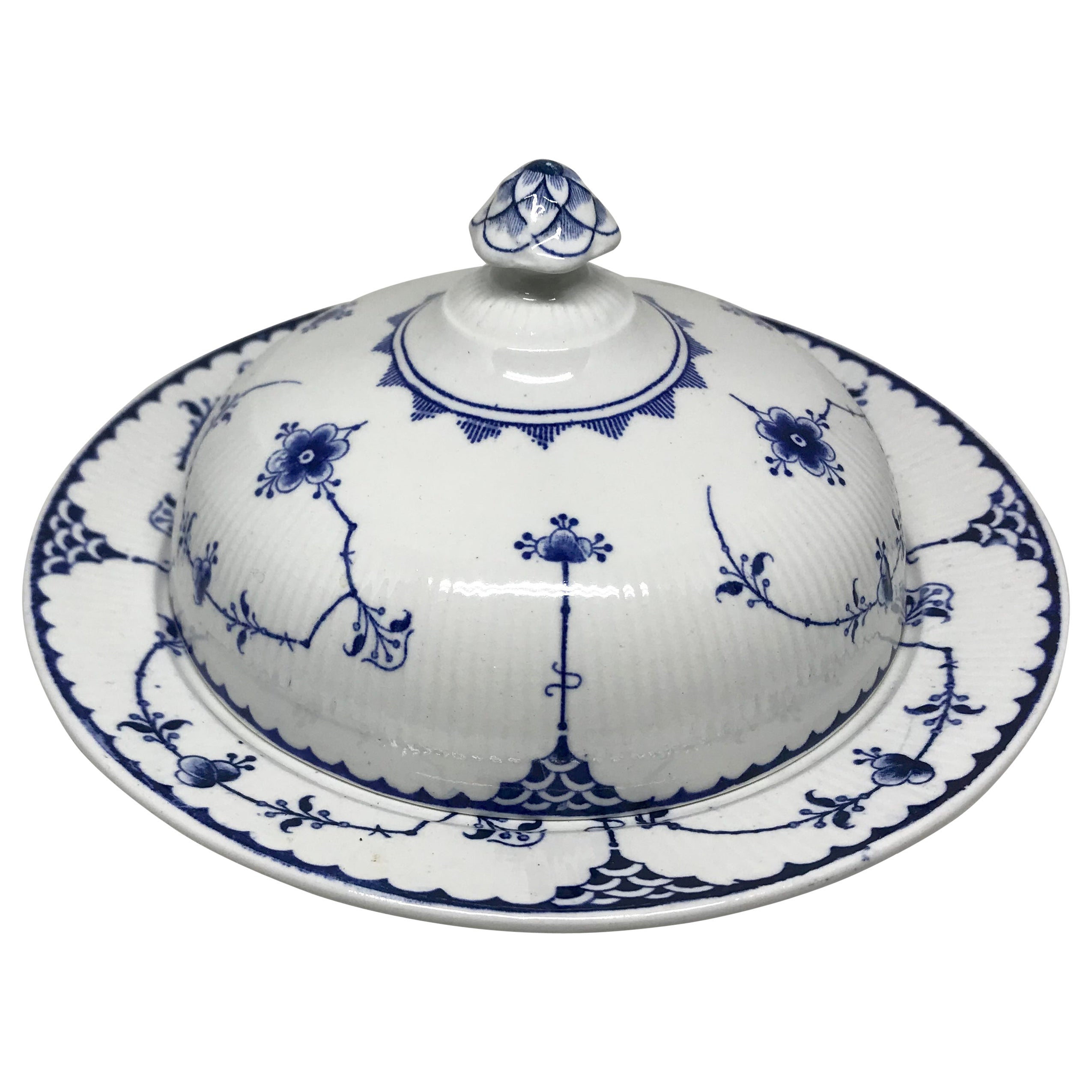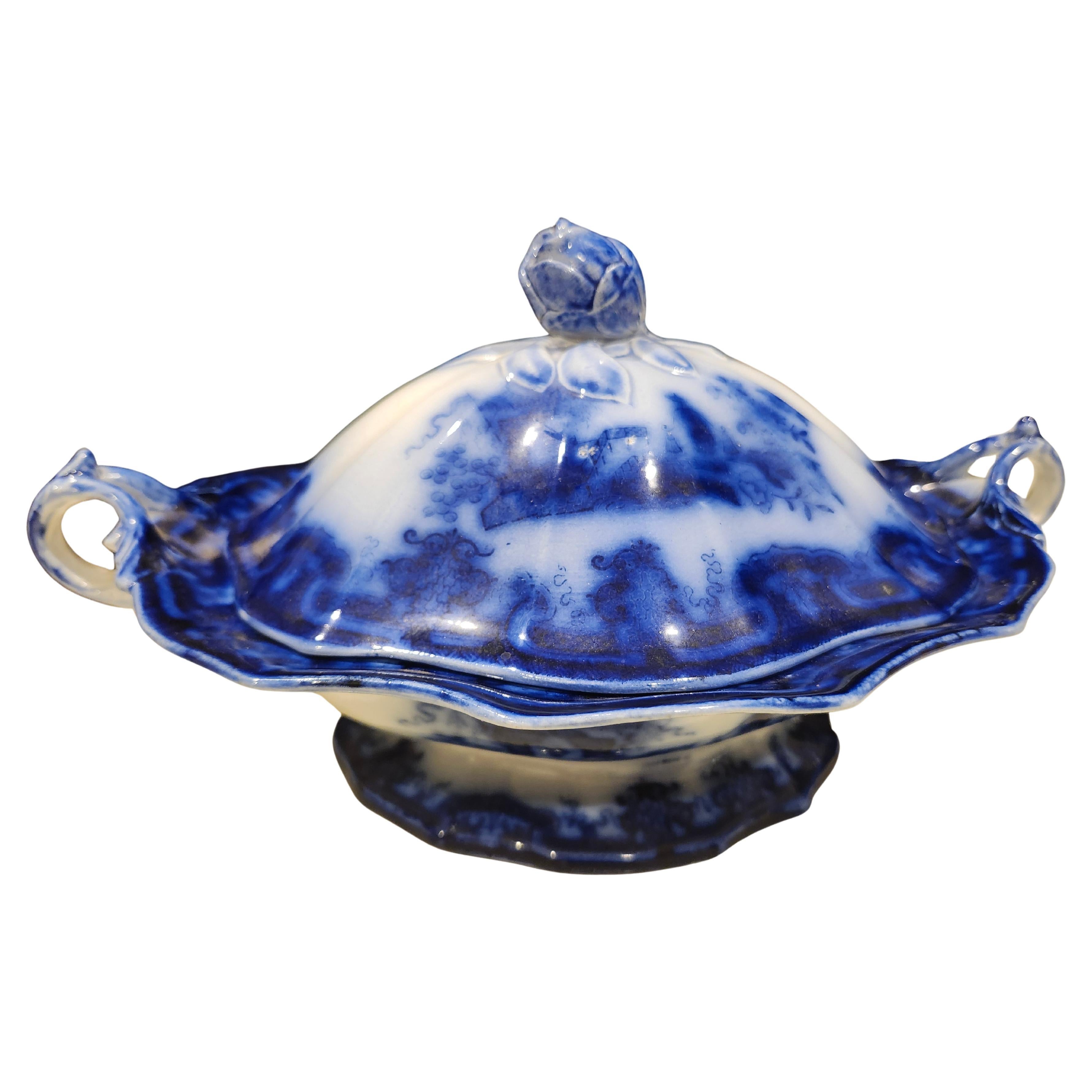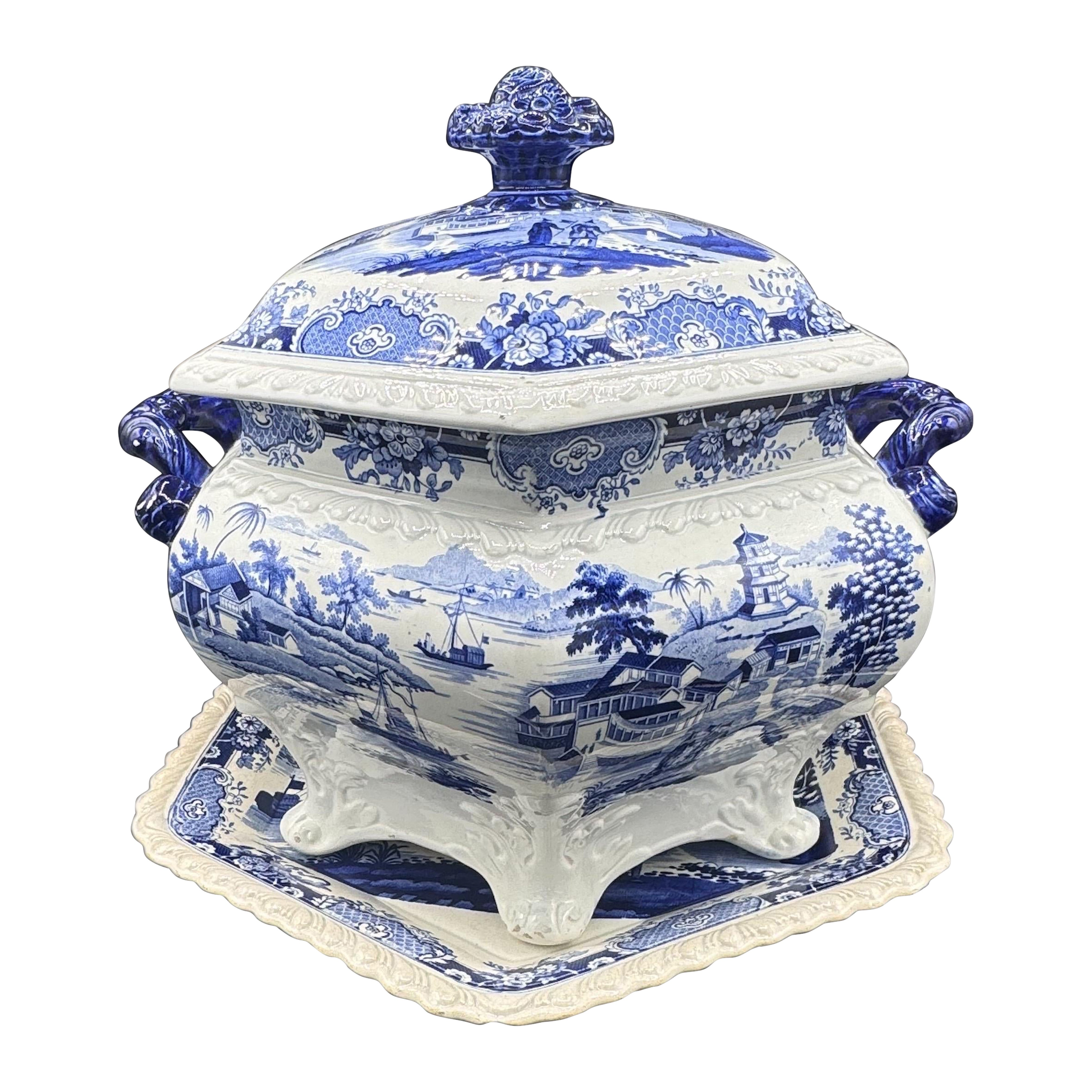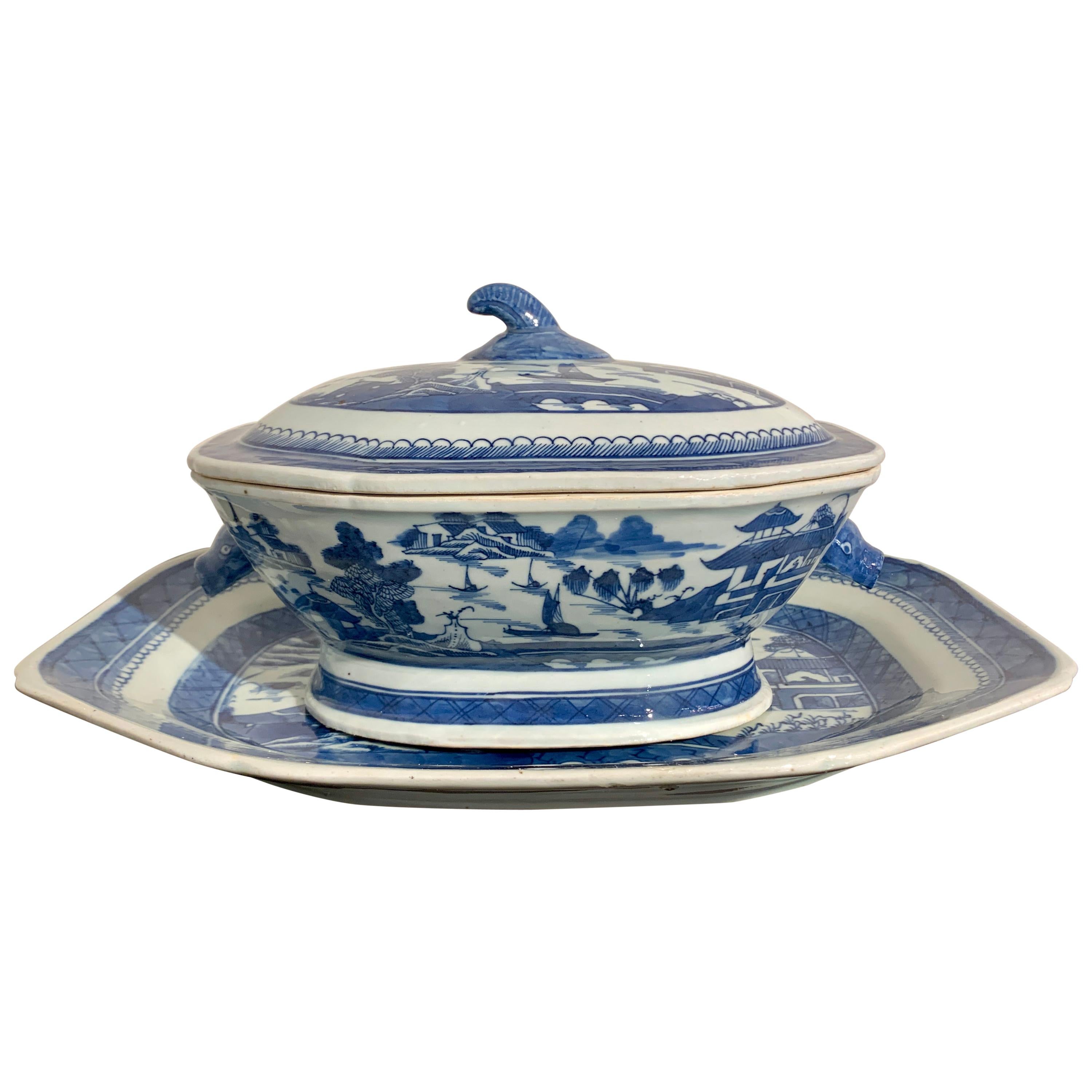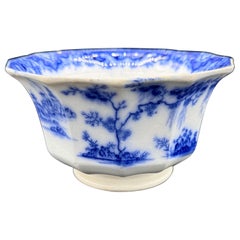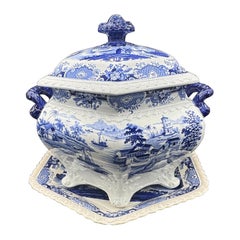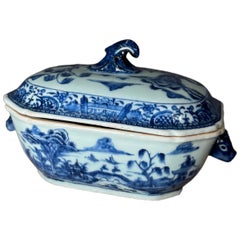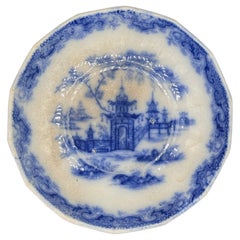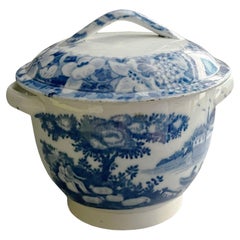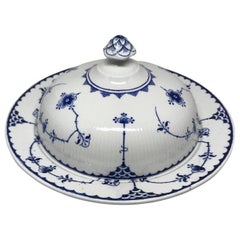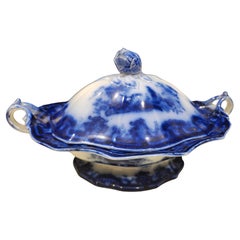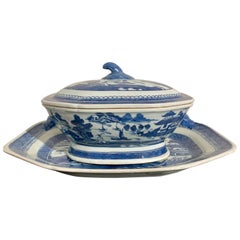Items Similar to Blue & White Footed Bowl With Lid "Whampoa Pattern" Transferware
Video Loading
Want more images or videos?
Request additional images or videos from the seller
1 of 18
Blue & White Footed Bowl With Lid "Whampoa Pattern" Transferware
$850
£641.47
€734.39
CA$1,198.78
A$1,316.11
CHF 686.62
MX$15,926.80
NOK 8,605.70
SEK 8,108.83
DKK 5,482.01
About the Item
Blue & White Footed Bowl With Lid "Whampoa Pattern" Transferware
Ironstone
- Dimensions:Height: 7.5 in (19.05 cm)Width: 10.5 in (26.67 cm)Depth: 10.5 in (26.67 cm)
- Style:William IV (Of the Period)
- Materials and Techniques:Ceramic,Fired
- Place of Origin:
- Period:
- Date of Manufacture:1840
- Condition:Wear consistent with age and use. Small chip to Footed area, Only visible fronm the underside.
- Seller Location:Huntington, NY
- Reference Number:1stDibs: LU5362242241472
About the Seller
5.0
Platinum Seller
Premium sellers with a 4.7+ rating and 24-hour response times
Established in 2018
1stDibs seller since 2020
148 sales on 1stDibs
Typical response time: <1 hour
- ShippingRetrieving quote...Shipping from: Huntington, NY
- Return Policy
Authenticity Guarantee
In the unlikely event there’s an issue with an item’s authenticity, contact us within 1 year for a full refund. DetailsMoney-Back Guarantee
If your item is not as described, is damaged in transit, or does not arrive, contact us within 7 days for a full refund. Details24-Hour Cancellation
You have a 24-hour grace period in which to reconsider your purchase, with no questions asked.Vetted Professional Sellers
Our world-class sellers must adhere to strict standards for service and quality, maintaining the integrity of our listings.Price-Match Guarantee
If you find that a seller listed the same item for a lower price elsewhere, we’ll match it.Trusted Global Delivery
Our best-in-class carrier network provides specialized shipping options worldwide, including custom delivery.More From This Seller
View AllBlue & White Bowel “Whampoa Pattern “
Located in Huntington, NY
Blue & White Bowel “Whampoa Pattern �“
Category
Antique Mid-19th Century English William IV Ceramics
Materials
Ceramic
Blue & White Tureen & Platter “India Temple” Pattern
Located in Huntington, NY
Blue & White Tureen & Platter “India Temple” Pattern
Category
Antique Mid-19th Century English William IV Soup Tureens
Materials
Ceramic
Chinese Export Blue & White Porcelain
Coved Tureen, 19th Century
Located in Huntington, NY
Chinese Export Blue & White Porcelain
Coved Tureen, 19th Century
Category
Antique Early 19th Century Chinese Chinese Export Serving Pieces
Materials
Porcelain
$704 Sale Price / item
54% Off
Blue & White Dish Staffordshire Whampoa Pattern Transferware
Located in Huntington, NY
Blue & White Dish Staffordshire Whampoa Pattern Transferware
Category
Antique Mid-19th Century English William IV Ceramics
Materials
Ceramic
Blue & White Plate 8.25" Staffordshire “Whampoa Pattern” Transferware
Located in Huntington, NY
Staffordshire 8.25” Plate “Whampoa Pattern” Transferware
Category
Antique Mid-19th Century English William IV Ceramics
Materials
Ceramic
Blue & White plate 8.25” Staffordshire Transferware “Whampoa Pattern”
Located in Huntington, NY
Blue & White plate 8.25” Staffordshire Transferware “Whampoa Pattern”
Category
Antique Mid-19th Century English William IV Ceramics
Materials
Ceramic
You May Also Like
English Blue and White Transferware Small Tureen
Located in Clearwater, FL
A small antique transfer ware tureen with handles on the side and top. The pattern on the top resembles the Taylor, Smith and Taylor dogwood patt...
Category
Antique 1880s English Porcelain
Materials
Porcelain
English Blue and White Covered Dish
By Furnivals
Located in New York, NY
English blue and white covered dish. Blue and white covered dish for butter or cheese with markings for Furnivals Limited. England, early 20th Century
Di...
Category
Early 20th Century English Serving Pieces
Materials
Ceramic
19th Century Flow Blue Covered Dish with Handles by Tj & J Mayer England C1840
Located in Port Jervis, NY
Very special 2 pc setof flow blue ironstone china, a vegetable bowl with Handles and a covered lid. Completely decorated in the iconic flow blue glaze a deep cobalt blue. In excellen...
Category
Antique 1840s Chinoiserie Serving Bowls
Materials
Clay, Ironstone
Chinese Export Blue and White Porcelain Covered Tureen and Platter, 19th Cenutry
Located in Austin, TX
A traditional and timeless Chinese Export "Canton" pattern blue and white porcelain tureen and cover with associated large platter, late 19th ce...
Category
Antique Late 19th Century Chinese Chinese Export Soup Tureens
Materials
Porcelain
Antique French Rouen Faience Blue & White Tureen, circa 1900
By Rouen
Located in Pearland, TX
A lovely antique French Rouen faience blue and white ironstone soup tureen, circa 1900. No maker's mark. This gorgeous lidded tureen is dec...
Category
Early 20th Century French Delft and Faience
Materials
Ceramic, Faience
Large Blue and White Arras Porcelain Round Soup Tureen French 18th Century
By Arras Foundry
Located in Katonah, NY
This late 18th-century French soup tureen is decorated with an elegant design of delicate cornflower sprigs.
The color of the porcelain body is creamy white.
The cornflower sprigs, handles, and border edging are decorated with beautiful deep twilight blue enamel.
The makers of Arras porcelain specialized in porcelain painted in this entrancing blue called "Bleu d'Arras."
The combination of the creamy white ground and the blue decoration is splendid!
Natural forms like the tree branch handle and the blue cornflower decorations were the height of French fashion in the last quarter of the 18th century.
This tureen was made at the Arras porcelain factory circa 1780.
Dimensions:10.25" diameter x 9" height
Condition: Excellent, with some small original firing cracks along the outer edge of the cover (see image #3).
Price: $1,400
The underside of the tureen is marked with the letters "AR" and the flying bird symbol of the Arras factory.
On 1stdibs, we also have listed a round tureen made by Arras Porcelain: Item Reference LU866530122692.
Background of Arras Porcelain: The Arras Porcelain Manufactory was started in the 1770s by the family Delemers.
They were a family of four sisters...
Category
Antique Late 18th Century French Rococo Soup Tureens
Materials
Porcelain
More Ways To Browse
Blue Transferware
Transferware England
Antique Blue And White Transferware
Antique Transferware Patterns
Ironstone Transferware
Alev Ebuzziya Siesbye
Alev Ebuzziya
Amari Ceramics
Andre Aleth Masson
Antique Crocks With Handles
Antique Foley China
Antique Ironstone Mold
Antique Sugar Mold
Arne Bang Ribbed Bowl
Axel Salto Bowl With Sung Glaze
Bandana Ironstone
Biot France Plate
Biot Plates
